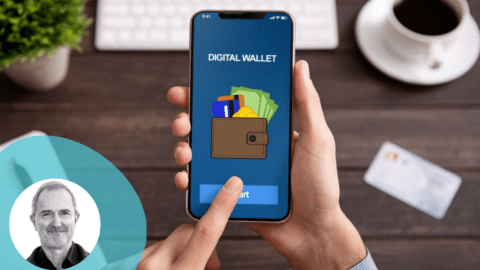In response to the explosive adoption of smartphones, along with growing consumer demand for a seamless shopping experience across all channels, retailers this year are increasingly shifting their point-of-sale to mobile devices versus traditional cash registers and wrap stations. In making this transition, a primary consideration is choosing between Apple’s iOS for its mobile devices and Google’s Android, which is the software platform for devices based on the Linux operating system. Together, iOS and Android comprised 92% of the smartphone shipments in Q4 2012, according to the independent research firm International Data Corporation’s (IDC) Worldwide Quarterly Mobile Phone Tracker.
Mobile POS solution provider Infinite Peripherals, Inc. (IPC), which was the first to add mobile POS functionality to the iPhone®, iPod® touch and iPad®, has identified several important issues for retailers when analyzing iOS and Android.
Device Availability
Availability of Android devices depends on the carrier; and typically, the devices do not last long on shelves, as each carrier receives a limited amount. Apple, however, sells tens of millions of any given iOS devices, including the iPhone, iPod, iPad and iPad Mini. Plus, previous versions of the iOS devices remain available after next generation devices are introduced, which provides security in numbers, prolongs usability and ensures device availability.
Advertisement
Ease Of Use
Apple is heralded for developing devices that work intuitively, right out of the box, with no need for instruction manuals. This is beneficial to retailers, who contend with staff turnover and requisite training, and who regularly hire employees with widely varying degrees of technical proficiency.
Security
Android’s open source policy enables anyone to develop an app and place it on the Android app store. This can be risky, as Android does not monitor all apps available for its devices to ensure they are not infected with malware. In fact, according to the Mobile Threat Report Q4 2012 from F-Secure, in the fourth quarter of 2012 alone, 96 new families and variants of Android threats were discovered, which almost doubles the number recorded in the previous quarter. In 2012, 79% of malware threat families and varients targeted Android, while just .7% targeted Apple.
Apple curates all of its apps, and developers must participate in Apple’s thorough process, which includes checking for malware. This provides retailers with confidence that all Apple apps are legitimate and secure. However, according to a December 3, 2012 article in Network World, security experts point out one drawback of the closed, proprietary iOS architecture: when an iOS device is “jailbroken,” its security shield is broken. Therefore, Android’s openness and flexibility allows for greater customization of security.
Cost
When it comes to price, Apple has the advantage here. The Samsung Galaxy 3 is $699 – $799 with no contract, while Apple’s iPod touch 5 averages $200, and does not require a contract. Moreover, older versions of Apple products easily can be sold on the aftermarket, allowing retailers to resell iOS products, thereby recouping money and recycling devices.
App Availability/Development
More and more, the developer community is leaning toward iOS because of fragmentation in Android enterprise offerings. This has forced developers to focus on the iPad as the leading tablet platform, and on the iPhone first for smartphone apps.1
Apple has managed to maintain its dominance at the top of developers’ platform wish list, with 85 percent of creators very interested in building for iOS smartphones, and another 83 percent feeling similarly toward the iPad.2 Android, on the other hand, saw a decline in developer interest, with 66 percent interested in developing for Android tablets and 76 percent intrigued by Android phone apps.3
App Quality Control
Many developers say that Apple’s rigorous app approval process results in higher quality apps and virtually eliminates the risk of counterfeit or junk apps. Some also report that they sell more apps on iOS versus Android, perhaps due to great confidence in Apple’s store.
Operating System
The Android operating system is specific to each individual Android handset, making it more challenging for IT staff to manage. In addition, the 700,000+ apps available for Android are not compatible with every operating system, which can be frustrating for developers.
Alternatively, iOS is standard on all Apple devices, which enables developers and IT staff to more easily manage the devices and software overall.
User Preference
According to Kantar Worldpanel ComTech, iOS is the top-selling smartphone platform sold in the U.S., with 51.2% of market sales for the 12-week period ending December 23, 2012. Again, this influences rapid adoption, ease of use and familiarity among retail staff. Android is in second place with 44.2% of market sales.
Plus, Apple is continuing to win converts. Kantar Worldpanel ComTech also reports that 19% of iOS sales over the last year were derived from Android users, compared to 9% in 2011.
IDC believes that, by the end of this year, iOS will be the top operating system in the enterprise among companies that deploy mobile products to employees.4 While retailers must do their homework and carefully consider the pros and cons of iOS and Android for their business needs and goals, the reality is that mobile POS overall adds incredible efficiency, greater productivity and an enhanced experience at retail today.
Dung Lam is the Director of Enterprise Sales at Infinite Peripherals, Inc., where he is responsible for building the adoption of the company’s Linea Pro and Infinea Tab mobile devices to business accounts. Previously, Lam spent seven years at Apple, Inc., Cupertino, Calif., as an Enterprise Account Executive who significantly grew the Mac and iOS business at Fortune 1000 companies. His responsibilities include building relationships with solution partners, education of his customers and engaging in C-level discussions around mobile and desktop initiatives at these organizations.














